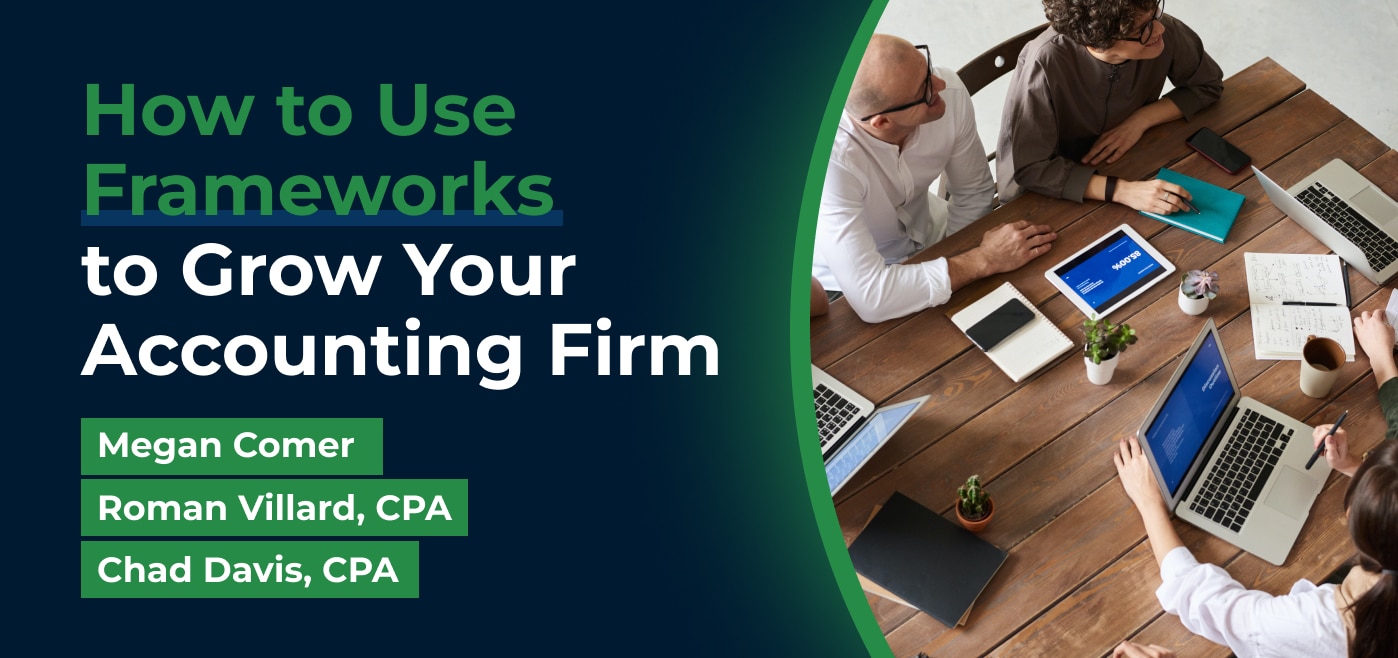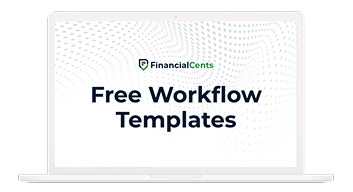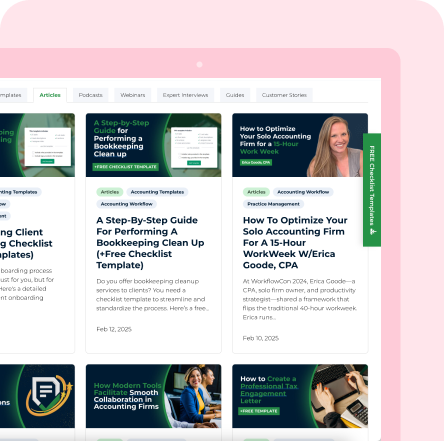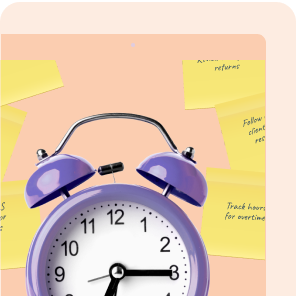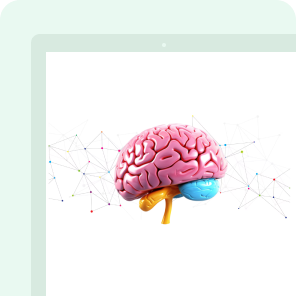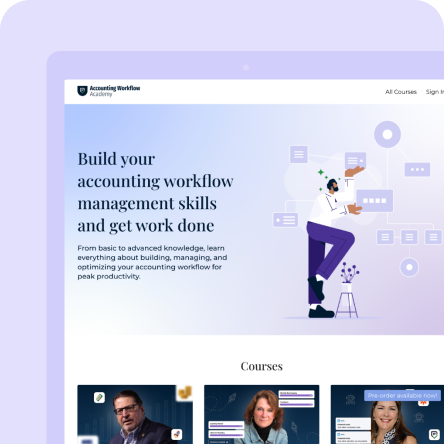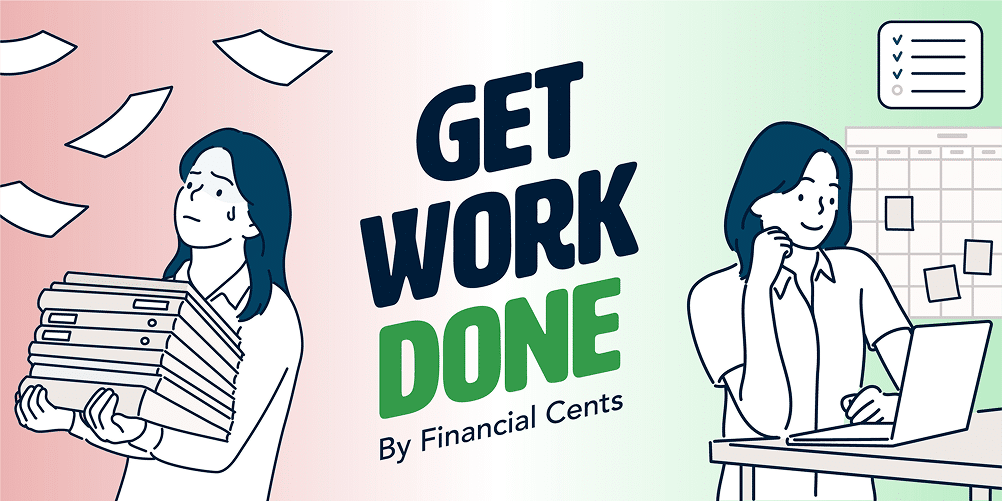Growth doesn’t just happen by taking on more clients or hiring a few extra hands.
Scaling your accounting firm requires strategy, structure, and a system that evolves with you.
It’s about creating frameworks—tailored, practical, and adaptable—to guide how your firm operates, serves clients, and builds a team culture that thrives.
At WorkflowCon 2024, three industry leaders—Megan Comer, Roman Villard, CPA, and Chad Davis, CPA—came together to share their hard-earned insights on frameworks.
They didn’t just talk theory—they gave actionable advice, real-world examples, and honest reflections on what’s worked for them (and what hasn’t).
What makes their insights powerful isn’t just that they’ve succeeded—how they’ve done it. Their stories offer a clear road map for success, from task management systems to data infrastructure to frameworks like the Entrepreneurial Operating System (EOS).
In this article, we will walk through their strategies step-by-step.
Start with the Basics
Every great structure starts with a solid foundation; the same goes for your accounting firm. As Roman Villard put it during the session:
Frameworks are your mental model for approaching problems and processes. They’re the overarching structures that guide how you deliver services, manage your team, and achieve your goals."
What Exactly Is a Framework?
At its core, a framework is a system of organization—a way to create structure amidst the chaos. But it’s more than just a checklist or a task tracker. A good framework helps you:
- Understand where your time and energy are going
- Define clear priorities for your firm
- Solve recurring problems in a consistent, scalable way
Think of it as a playbook for your firm. Whether you’re a solo practitioner or leading a team of 15, frameworks create a foundation that allows you to operate with clarity, predictability, and focus.
Chad Davis, CPA, co-founder of LiveCA, shared how frameworks helped his firm evolve:
Where you are today isn’t where you’ll be next year. Frameworks are always changing, and that’s the beauty of them. They give you something to build on, but they evolve with you as your firm grows and your challenges change."
Step 1: Start by Identifying What’s Broken
Every successful framework starts with one simple step: identifying what’s not working. This isn’t about solving every issue overnight—it’s about focusing on the most pressing pain points.
“Keep it simple,” advised Megan Comer. “It doesn’t have to be a grand framework—just something that solves your biggest pain at the moment. You’ll solve nothing if you try to fix everything at once.”
This might mean implementing a basic task management system like Financial Cents. This system lets you offload mental clutter, track deadlines, and ensure nothing slips through the cracks.
Megan shared her experience using Clockwork, a framework designed for small teams:
It helped us define primary and secondary roles, so everyone knows who’s responsible for what. That clarity is a game-changer, especially when resources are tight."
Actionable Tip: Write down your biggest bottlenecks—whether it’s missed deadlines, unclear accountability, or an unmanageable client load. Choose one issue to address first and focus on building a framework around solving it.
Step 2: Build Flexibility Into Your Framework
Rigid systems can often feel like trying to fit a square peg into a round hole.
While structure is essential, it’s just as important to leave room for growth, experimentation, and even failure.
For Davis, the flexibility of his firm’s chosen framework, the Entrepreneurial Operating System (EOS), was a game-changer:
EOS gave us a structure for managing our priorities, addressing issues, and setting goals. But what I love about it is that it also gives you room to say, ‘This isn’t working right now—let’s pivot.'"
When to Reevaluate Your Framework
Even the best frameworks need to be revisited periodically. Here are a few signs it might be time to adjust:
- Recurring Problems: If the same issues keep coming up, your framework may not be addressing them effectively.
- Team Frustration: If your team is struggling to follow the framework, it might be too rigid or unclear.
- Outdated Technology: As tools evolve, older systems may no longer meet your needs.
Chad Davis shared how his team approached this at LiveCA:
In EOS, we use an accountability chart to figure out where things fall apart. If something’s broken, we address it as a team and decide whether it’s time to change the framework or tweak the process."
Step 3: Use Data to Power Your Decisions
In today’s fast-paced accounting world, success isn’t just about making good guesses—it’s about making informed decisions backed by reliable data. Whether you’re figuring out how to price your services, allocate your team’s time, or improve client satisfaction, the right data can guide you toward smarter, more strategic choices.
“Every task, every issue, every client interaction—it all feeds into a centralized data system,” explained Roman Villard, CPA, at WorkflowCon 2024. “By consolidating 400+ data points per client, we gain real-time insights that guide our capacity planning, pricing, and team allocation. Data isn’t just useful—it’s essential to scale effectively.”
Why Data Should Be the Backbone of Your Framework
If frameworks are the structure of your firm, data is the lifeblood that keeps it running. Without it, you’re making decisions in the dark. With it, you can:
- Understand capacity: Know exactly how much work your team can handle and when to hire or reduce your workload.
- Optimize pricing: Base your pricing on actual effort and time rather than guesswork or industry averages.
- Enhance client relationships: Track client needs, deadlines, and satisfaction levels to deliver exceptional service.
As Chad Davis, CPA, shared during the session, his firm struggled until they implemented a data-driven approach:
Even at 50 or 60 employees, we didn’t have true accountability for technology or data management. We saw a huge difference once we introduced strategic projects and operations—essentially, our internal R&D. Two people in that department now handle all tech investigations, integrations, and planning. They’re making decisions based on hard data, not gut feelings"
How to Build a Data-Driven Framework
Ready to start using data to power your decisions? Here’s how to get started:
1. Centralize Your Data
The first step is creating a single source of truth for all client and operational data. This could be a CRM, a project management tool, or even a custom-built database.
“Consolidating data is critical,” Villard emphasized. “If your client information is scattered across spreadsheets, emails, and disconnected tools, you’ll miss opportunities and waste time.”
- Tools to Consider: Airtable, HubSpot, or industry-specific solutions like Financial Cents.
- What to Track: Client details, service scope, task completion times, communication logs, and feedback.
2. Standardize and Clean Your Data
Dirty data is as bad as no data at all. Inconsistent naming conventions or duplicate entries can lead to confusion and bad decisions. For example, do you have clients listed as “ABC, LLC” in one system and “ABC Inc.” in another?
“Clean, standardized data ensures accuracy,” Villard explained. “It’s the only way to make sure you’re seeing the full picture.”
3. Leverage Dashboards for Insights
Once your data is centralized and clean, it’s time to put it to work. Dashboards allow you to visualize key metrics like:
- Capacity: How much time is allocated versus available.
- Performance: How long tasks take and where bottlenecks exist.
- Profitability: Which clients or services generate the most revenue relative to effort?
Dashboards give me and my team instant visibility into what’s happening across the firm, so we can make adjustments on the fly."
Roman VillardStep 4: Empower Your Team with the Right Frameworks
Behind every successful accounting firm is a team that feels empowered, valued, and equipped to succeed. But empowering your team isn’t just about offering perks or recognition—it’s about designing frameworks that set them up for success, align with their strengths, and remove barriers to productivity.
“Empowerment starts with clarity,” said Chad Davis, CPA, “When people know exactly what’s expected of them and where they fit in, they perform better. That’s where frameworks like accountability charts come into play—they provide structure without micromanagement.”
How to Build Frameworks That Empower Your Team
Our team values time over money. Once we understood that, we created frameworks that allowed us to reduce weekly hours from 40 to 26 without cutting pay. That’s what truly empowered our team—giving them time to focus on what matters most."
Megan Comer1. Understand Individual Strengths
One of the best ways to empower your team is to align their roles with their natural abilities. Megan’s Working Genius framework helps identify each team member’s strengths and ensures they’re working in areas where they can thrive.
“Don’t put someone high in ideation in a repetitive, task-heavy role,” Megan explained. “When people work in their zone of genius, they’re happier and more productive.”
2. Define Roles and Accountability
Accountability is a cornerstone of team empowerment. Without it, confusion and inefficiency can creep in. Chad Davis shared how LiveCA uses accountability charts as part of the Entrepreneurial Operating System (EOS) framework:
“An accountability chart isn’t just an org chart,” Davis explained. “It defines where responsibility lies for every task and decision. That clarity ensures nothing falls through the cracks, and everyone knows exactly where they stand.”
- What to Include in an Accountability Chart:
- Clear roles for each team member.
- Defined responsibilities for key tasks or projects.
- A hierarchy for decision-making to avoid bottlenecks.
3. Ask Your Team What They Need
Empowering your team isn’t about guessing what motivates them—it’s about asking. Megan shared how a simple question changed the way her firm operates:
Our founder assumed money drove us, but when she asked, it turned out we valued time much more. That led us to build frameworks focused on efficiency, which allowed us to reduce hours without sacrificing results."
4. Provide the Right Tools and Resources
Even the best frameworks won’t work without the right tools to support them. Tools like a workflow management system (Financial Cents) can streamline workflows and make your team’s life easier.
For instance, Megan highlighted how task management systems ensure accountability and reduce mental clutter:
Having a system where you can see everything your team is working on is critical. It lets you redistribute tasks when someone is overwhelmed and ensures deadlines aren’t missed."
Step 5: Rethink Pricing and Capacity Planning
Pricing and capacity planning are the twin engines that drive the financial health of your accounting firm. Get these two elements right, making your business more profitable, scalable, and less chaotic. Get them wrong, and you’re stuck in a cycle of undercharging, overworking, and burning out.
Capacity planning is the linchpin of any framework. For us, it starts with our service library. Every service we offer has a set number of hours and a rate attached to it. By tracking actual hours worked, we’ve been able to refine our estimates and achieve a 90% accuracy rate. This consistency has transformed how we price and renew contracts."
Chad Davis, CPAHow to Build a Pricing and Capacity Framework
1. Create a Service Library
Start by listing every service your firm provides—bookkeeping, payroll, tax preparation, etc. For each service, define:
- The estimated hours required (e.g., easy, medium, or hard complexity).
- The associated cost or rate per service.
This library acts as your pricing blueprint, ensuring consistency across all clients.
2. Track Actual Time Spent
While initial estimates are helpful, tracking actual hours is critical for refining your framework. Use task management tools like Financial Cents to measure how long specific tasks take.
Over time, you’ll gain the data you need to adjust your pricing,” Davis said. “It’s not about perfection—it’s about progress."
3. Set Realistic Capacity Limits
To avoid burnout and ensure quality, set a monthly cap on billable hours for your team. This ensures that non-billable work like team training, mentorship, and strategic planning doesn’t fall by the wayside.
4. Ditch Guesswork in Pricing
At LiveCA, Davis eliminated value-based pricing in favor of a transparent, flat-fee model:
“Every client pays the same rate for the same service. It simplifies renewals, reduces confusion, and ensures fairness across the board.”
For solo practitioners, Megan Comer suggested starting small:
Track how long it takes to complete tasks, then use that data to adjust your pricing. If you’re catching up on a backlog of client work, it’s a good opportunity to assess whether certain clients are underpaying for the time they demand."
Build the Accounting Firm You’ve Always Dreamed Of
Scaling an accounting firm doesn’t happen by chance. It requires deliberate action, thoughtful planning, and the courage to embrace change.
No matter where you’re starting—whether you’re a solo practitioner feeling overwhelmed or a team leader managing a growing firm—the first step is always the same: take action.
“Focus on what’s broken,” advised Megan Comer. “Pick one thing to fix, and build from there. You don’t have to figure it all out at once. The small changes you make today will ripple into big results tomorrow.”
So, where will you start? Will you rethink your pricing model? Build a service library? Streamline your workflow processes with Financial Cents? Or perhaps centralize your data for smarter decision-making?
The path to growth starts now.
One framework. One solution. One step at a time.
